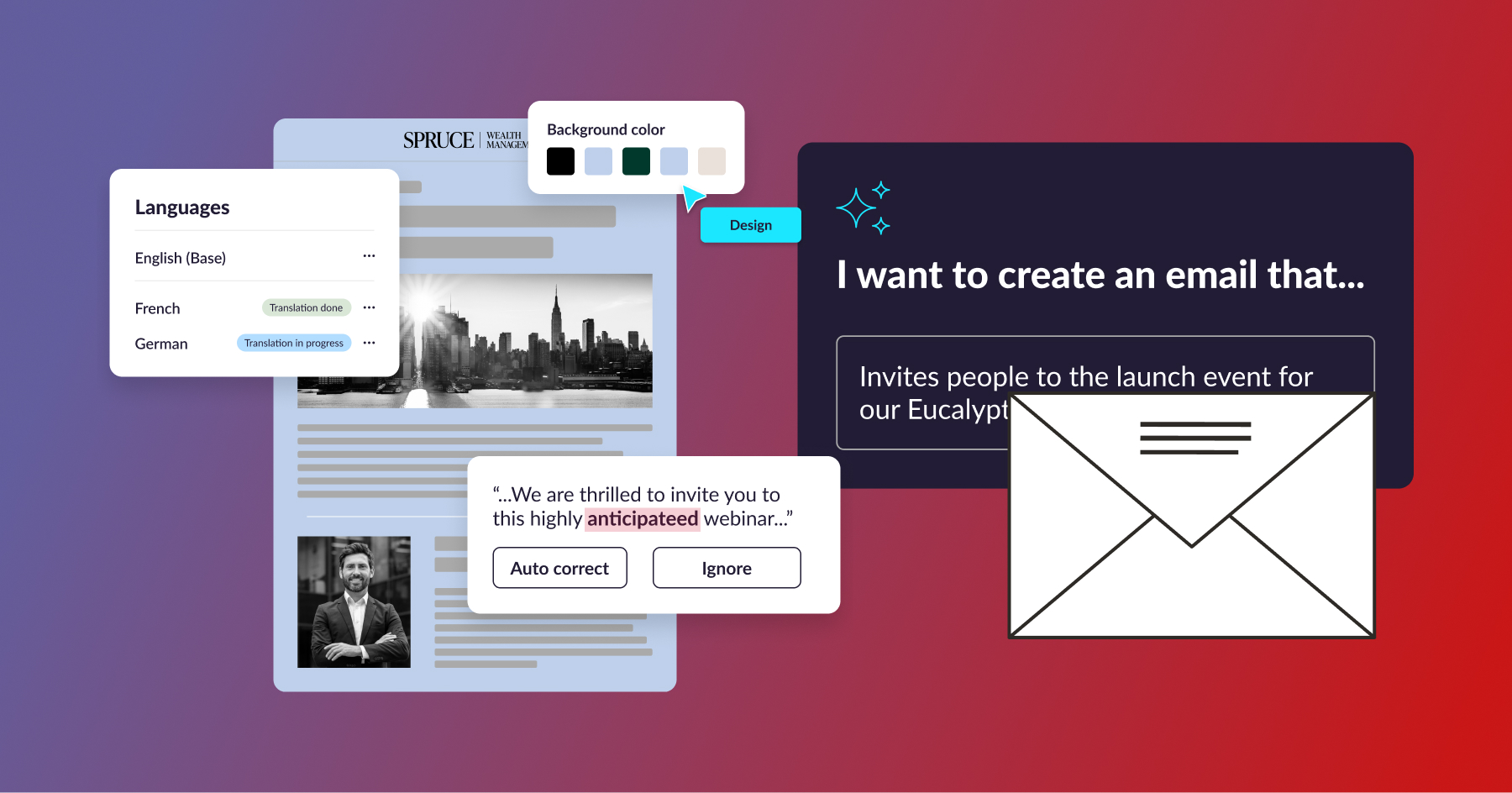When your organization needs to turn to a creative agency, an age-old dilemma pops up: Do you build an in-house agency or buy the services of an external group? To decide if an internal agency is best for you, you first have to understand what it takes to build a truly successful, stand-out in-house operation. To get a better sense of what that entails, Stensul CEO Noah Dinkin spoke with Charlie Bory, a leader in the creative agency space who has been building successful in-house agencies for the better part of 30 years.

What is the general structure of an in-house agency?
Often, in-house agencies mimic external agencies, so you’ll have account teams, project management, creative groups, and an operational studio, depending upon the type of work they do. There’s this cost savings that everyone feels, “Oh, my God, we’re going to save so much money bringing it in-house,” but that is not always the case, and that [mindset] puts you in a very difficult position.
So, what I generally propose to people is to manage the brand much better across any number of channels. If you are bringing a team in-house, you really have to look at how you manage the assets and the structure that’s going to best support all of your business groups or brands. That’s a much easier solve. If you take that premise, it is a much more robust way for you to build teams, and it also removes you from this saving money kind of nomenclature.
And how is that measured? How do you report up and say, “We had an amazing year managing the brand”?
That’s where the technology tools come in your project management system. The big challenge with people—especially creative people—is that they want to think, they want that time to enhance the creative process. So, it’s a delicate balance to get them to account for their time, but what you start to see when you do that is it brings a lot of value and you see how many projects you can do, how much time it takes you to do something, and which businesses may or may not be paying you enough money for the work that you’re actually doing. You’re able to collect that data and that information, which lets you make a much better educated decision.
Does the in-house agency usually have one project management system?
Yeah, that is the goal. We have our own system, and then we give access to people internally, so you as a customer or client would have a front door to submit a brief through an online portal. You then send that work in and become a user in the system, and most systems have some type of digital review. So as the work is being done, it gets sent to you, and then you can approve it and make comments. When you try to set up this agency structure, people are very familiar with it, and it becomes really easy to work with people.
When we spoke previously, you mentioned when you think about budgeting and planning, it’s always a choice between upgrading the computers and staffing. Is that still correct?
It’s a delicate balance between staffing needs and technology needs. Training is a big one that often gets left by the wayside. So, every year, it’s a challenge. Sometimes you’re tasked with reducing your budgets. Certainly in this environment, that’s a big one. But what we try and do is have a baseline where we know that we can spend X amount of dollars each year on particular things that are going to help improve us. Sometimes, there are areas where you can store some extra money and reallocate it to a different area.
Freelance spend is often a bucket where you don’t know exactly what you’re going to spend, so you make an approximation based upon how much you may have spent the year before and factor in some additional monies there. Oftentimes, we factor in a little bit more so that I can bucket some of that money into other areas as needed.
And when you do have funds available to potentially invest in new technology, how do you decide what kind of technology to go into?
That’s a great question. Sometimes it’s a business need, and sometimes we say, “Okay, we need to go figure out how to do AI stuff or VR stuff.” Other times, it’s a matter of, “Okay, I know for a fact that we need to have more staff.” So, that is again the delicate balance. I attend a lot of conferences, I go to trade shows, I meet with vendors, too, because there’s always a smarter way of doing something.
I am not afraid to change anything that we have if the results are going to be much more positive for the team. It behooves everyone to be able to keep your options open.
Can you talk a bit more about technology providers coming in to give lunch and learns, updates, or trainings?
We do that a lot. Adobe is a big partner of ours, simply because their software is the leader in the industry, so one of the things I did very early on was become a beta test partner with them. So, the team sees the software early, and Adobe comes in, they do analysis with us, they watch how we work. We look at the different software and say, “Why wouldn’t you use this one over that one?” I give the team opportunities to participate in that because it empowers them to be part of the process. I’m not the one doing the work, they are. So to me, it’s much more vital that they have a say in our direction, the ability to look at software and say, “Oh, this is going to work better.”
How do you measure the growth an internal agency goes through?
There are a couple of ways we do this. You have phases of years: from one year, two to three, five to six, and so on. Sometimes [you see] dramatic changes [between those phases] because from year one, you’re kind of just putting out fires. So, years two and three, you realize a direction and things start rolling.
As you start to prove yourself and the value that you have against the external agencies, that is what starts to build out the funding for your department. You have to prove yourself to your customers every day. If you don’t do a good job, they’re going to go to an outside agency. So it behooves you to be able to do the best job you can, whether that’s client support or getting things done faster or cheaper—those are the things on the business side that start to affect your growth from year to year.
Do you find that building your reputation internally comes from metrics, like measures of cost and turnaround time, or is it more anecdotal, like word getting out about your team’s performance?
It depends on the type of company you’re in and who you’re dealing with. I’ve been in both and we’ve had to address those areas in two separate ways. The first way is you make a relationship, and these people trust your judgment, and the best case scenario is they trust that you’re going to do it. We’ve had businesses use us for 12 years because we’ve done great work. The campaigns that we have done have been stellar, so it’s not even a question of them going outside. Other times, I’m fighting with people who are paying more money to go with an outside agency, because—and this is the really challenging one—we’re not order-takers. We look at the content, we look at the material and say, “Does this make sense for our brand? Will it move the mountain?”
Outside agencies don’t necessarily do that. They’ll take the request because it’s a job, they’ll fund it, and they can charge you extra money. We turn down jobs sometimes because they don’t make sense or we’ll talk to the client and say, “We don’t understand your vision here. Explain what you’re doing.” Some people get very mad with that. That is one reason why I’m a huge proponent of the idea that project managers should not be the account managers. Both have their specific skills, and for account managers it’s that client communication. It’s no different than when you call up customer service or you call up a repair shop—it’s the ability for that person to connect with you that really is going to drive home their want to do business with you.
Are there different levels of technology or infrastructure you bring in as an agency grows through those tiers that you mentioned?
Yes. The first thing I generally bring in or look at is a project management system because for the most part when I walk in, and let’s say if the agency is starting from scratch, it’s important to set some structure. Are you going to be working remotely? Remote is a big thing now, so clearly, that’s not going to go away. People who have internal servers are going to have to come in through VPN. So large storage or external storage companies are imperative.
Subsequently, as you get bigger and you have a large volume of assets in your group, you start to look at digital asset management and how to integrate that into your workflow, so that you can create one asset for many as opposed to re-creating the same thing over and over and over again. Lastly, we look at companies like Stensul that help an agency perform a large volume of work more efficiently.
Charlie, what’s the difference in your opinion between an internal agency and what some people call a center of excellence?
I think this goes back to the reason I tell companies that it’s vitally important that they develop a mission statement, because you’re setting the tone for your team. So, who do you want to be? Are you a center of excellence? When people come in, do you want them to think, “Holy smokes, this is an amazing place you have,” or do you set up just like a normal office space where it’s just the same as everybody else? It goes back to, “What do you want to be within your team”?
And is that generally set by the leader of the internal group?
It should be. It’s great when senior management is on the same page with everybody else. The person at the bottom of the pile should feel just as important as the person at the top. Now, they make clearly different decisions and [perform different roles], but that doesn’t mean that their input is not wanted. That’s the environment that you can ultimately be successful in. Develop an environment where people feel safe, people understand that their voice is going to be heard and have some meaning and decisions don’t always have to come from the top.
“I have people come into my office every day and tell me that they don’t like how something is done. And I’ll say, ‘Okay, find me a better solution.’ And if they do, we pilot it, we test it, we then test it in a larger group. And then subsequently from there, if the larger team feels that this is a better solution then we implement it.”
It doesn’t really matter whether you call it a Center of Excellence or Creative Services or anything else. It’s what kind of team you want to be and the type of work that you generate. You have to remember you’re in customer service. You’re in a service business. And if you don’t approach it that way, “I’m going to do the best job I can to make whatever you send in the best it can be,” you start to fail because of that. So I think that’s the magic sauce that you have to approach [an internal agency job] with, and then you’ll be able to be successful.
What do you wish you knew back when you started running internal teams?
I used to shoot what’s called stats. It was basically in a dark room shooting film, and I was in there for 12 hours a day. It was a horrible job and I had the worst boss. And I always said, at the time, “If I ever manage people I would never in my life treat them that way.” And I’ve always brought that same feeling with me, to know that somebody who may do the most mundane job should feel just as important as I do.
People think that my job is a technology job, but it’s really not. It’s a people job.
“I often say you have to have the skill levels of a MacGyver and the patience of Gandhi.”
Note: This interview has been lightly edited for grammar and clarity.
Do you work at an in-house agency and are Interested in seeing how an email creation platform can integrate with your existing digital asset manager? Schedule a demo with a Stensul expert to see it in action and learn how your team can free up hundreds of hours a month.


